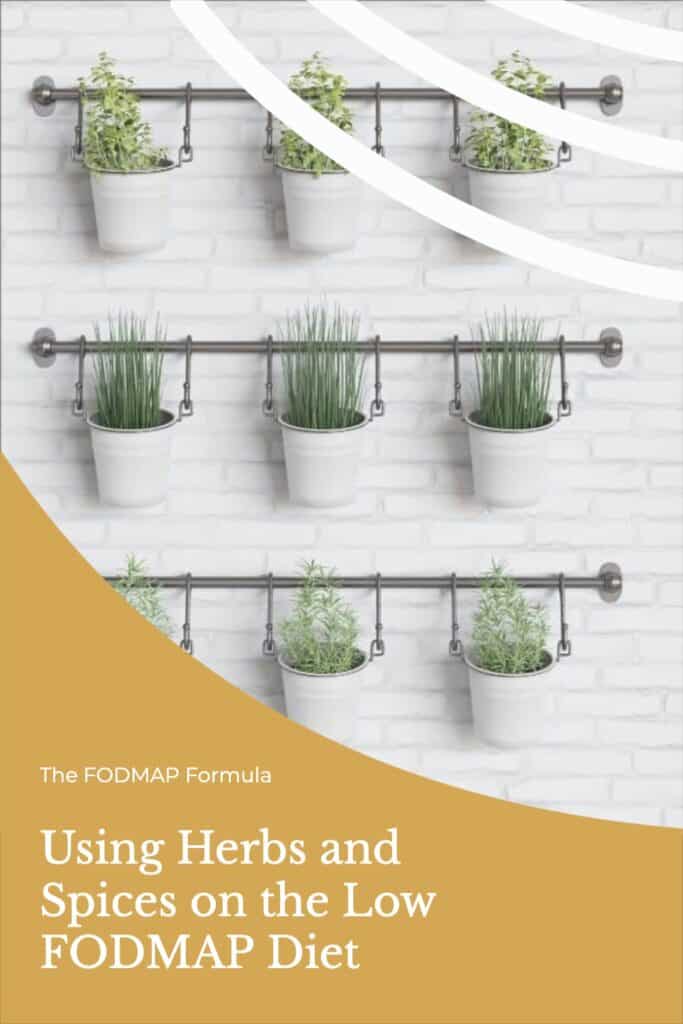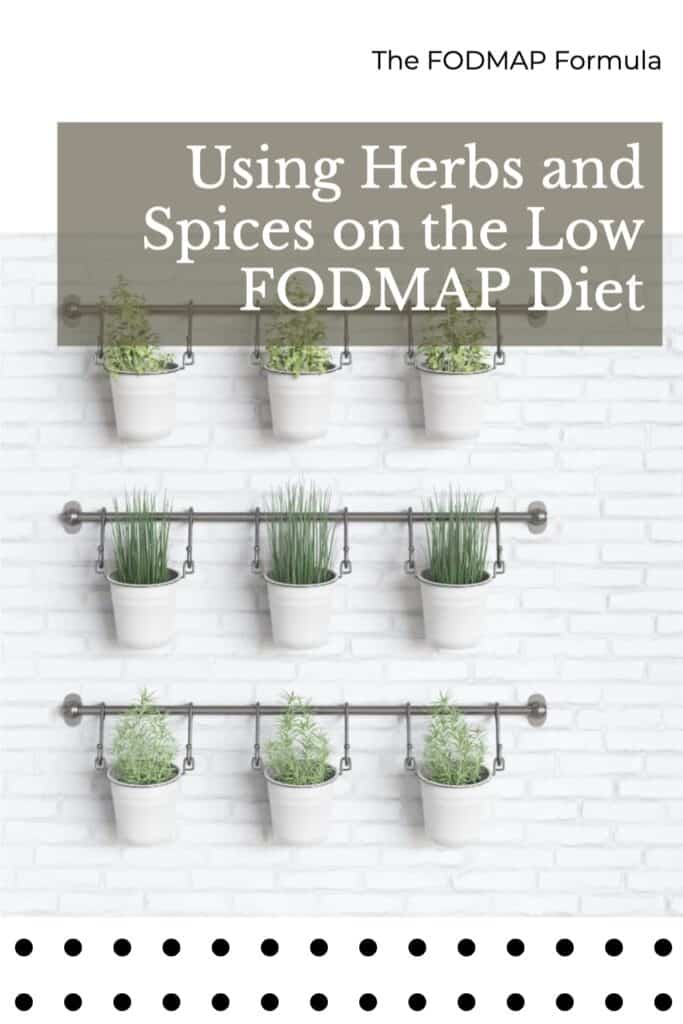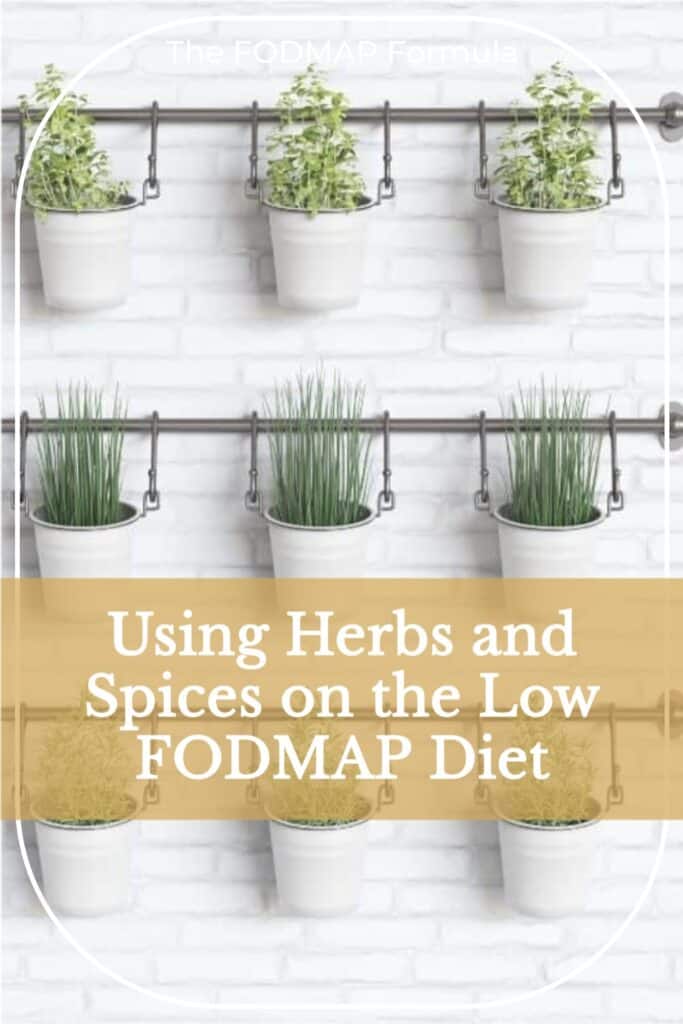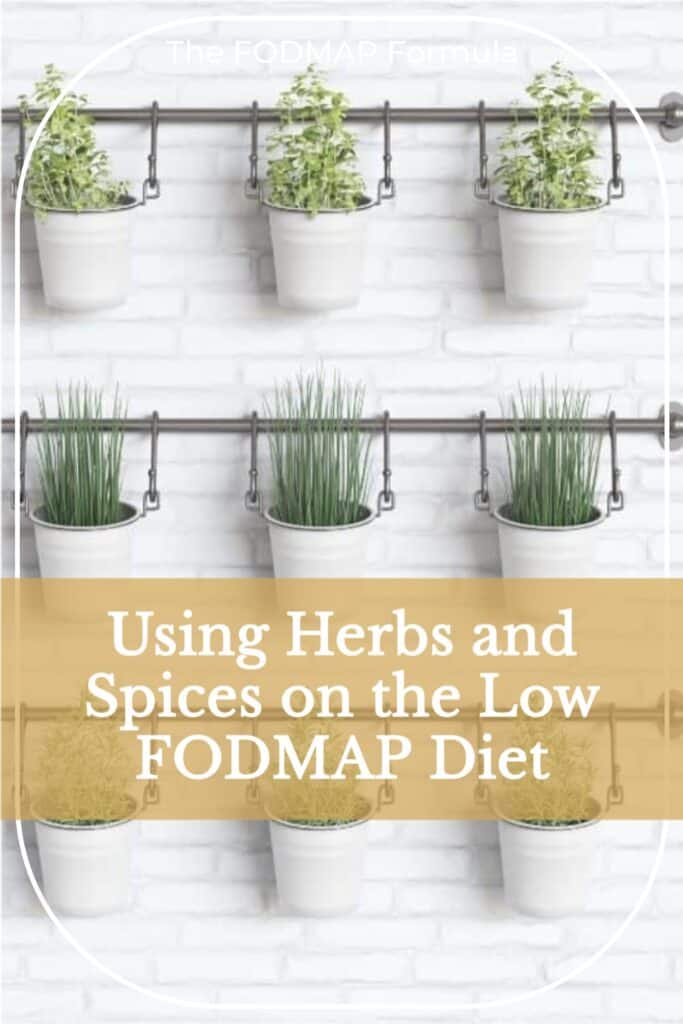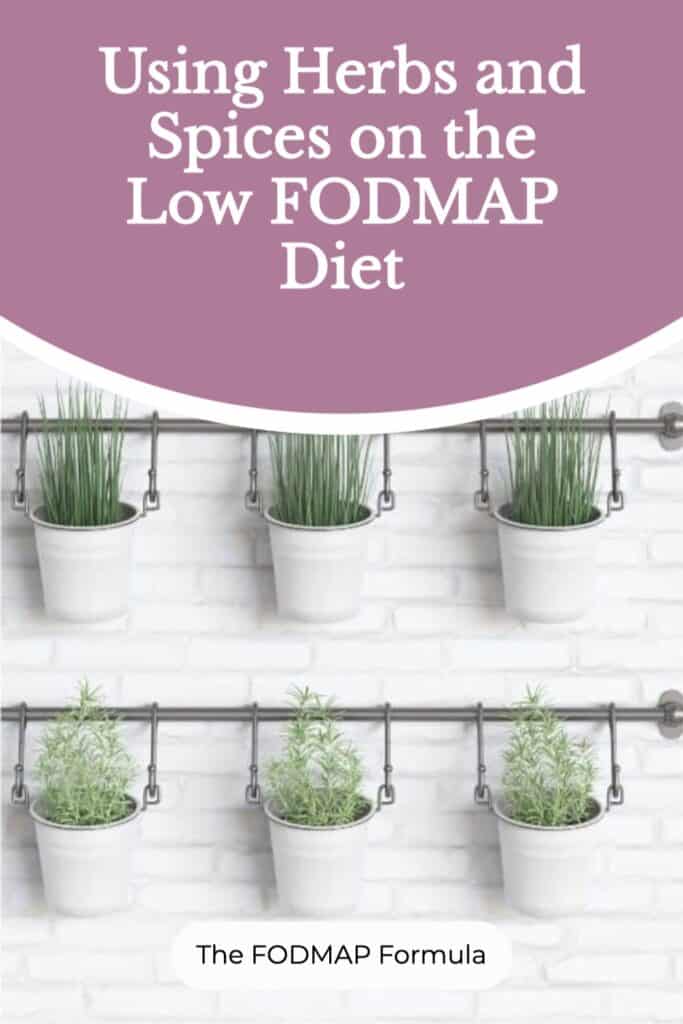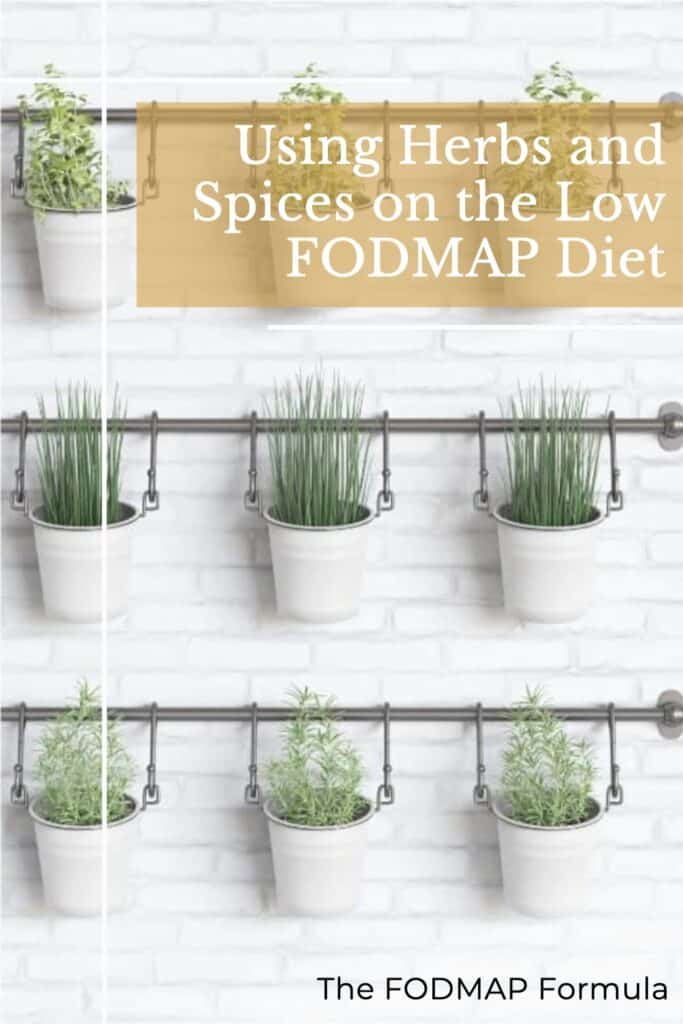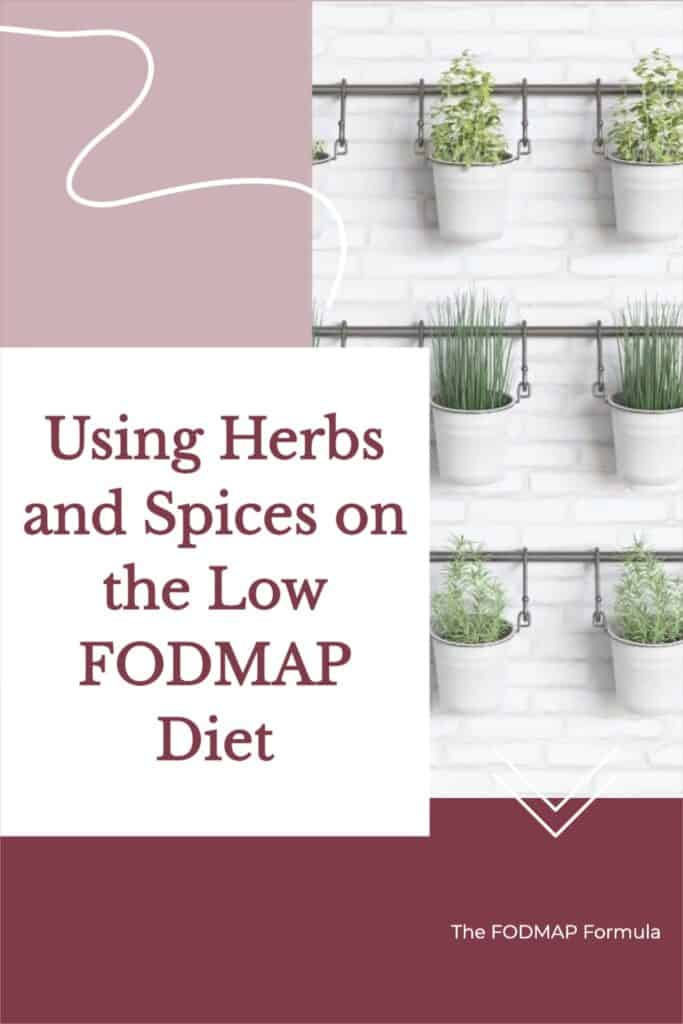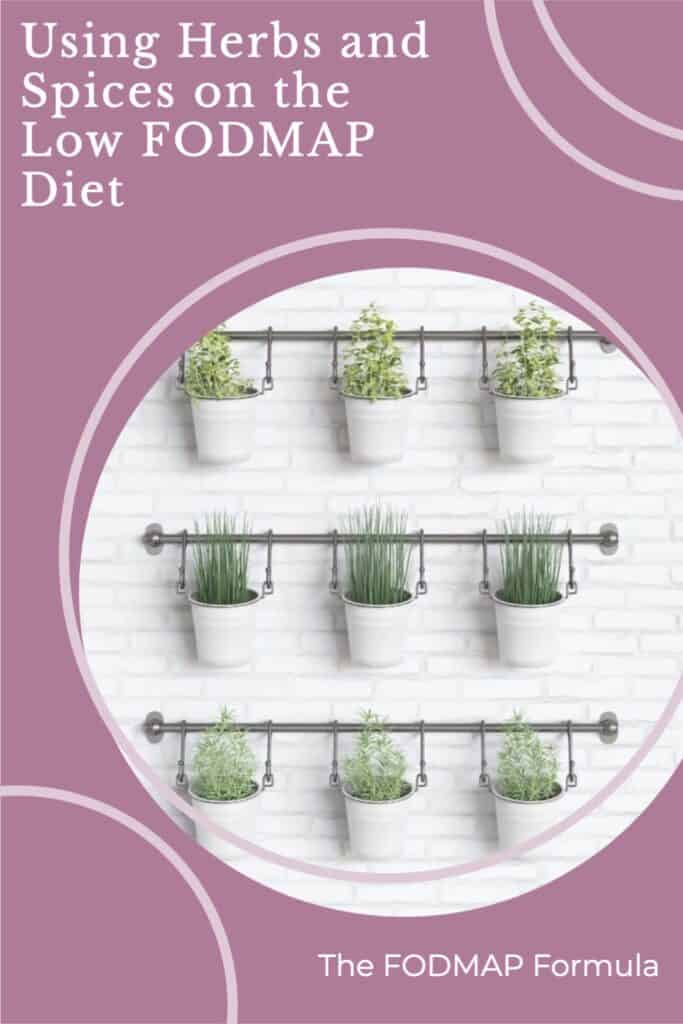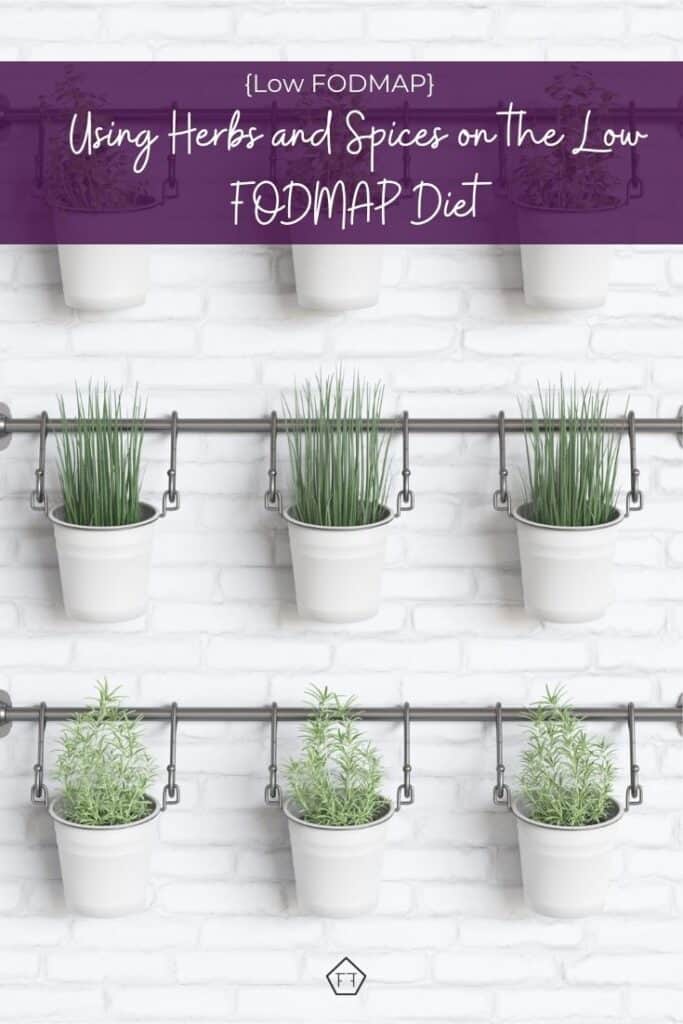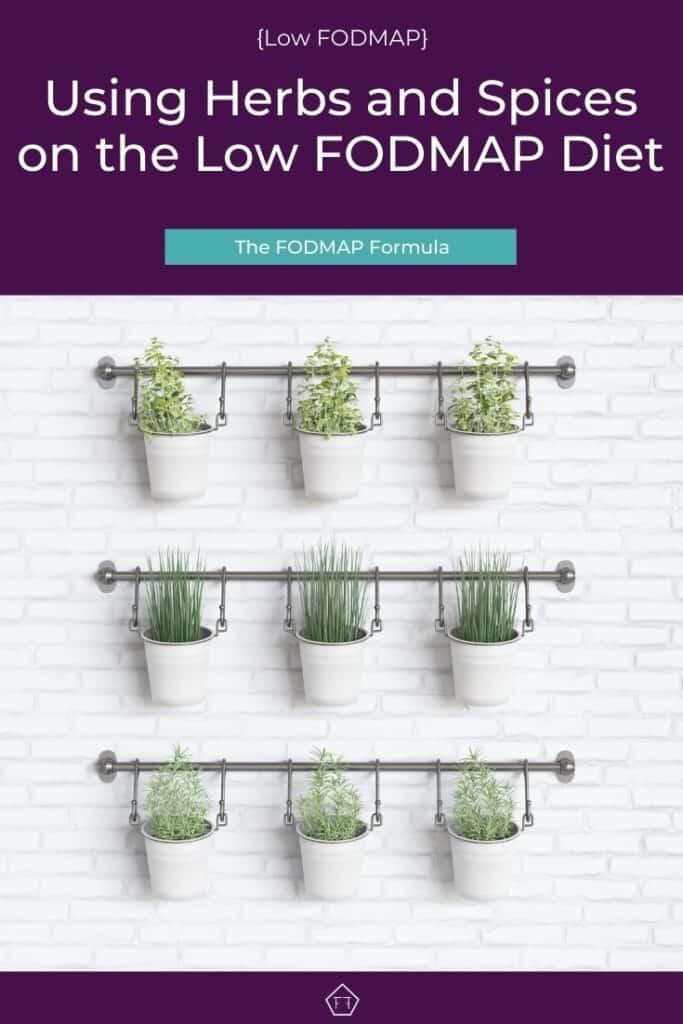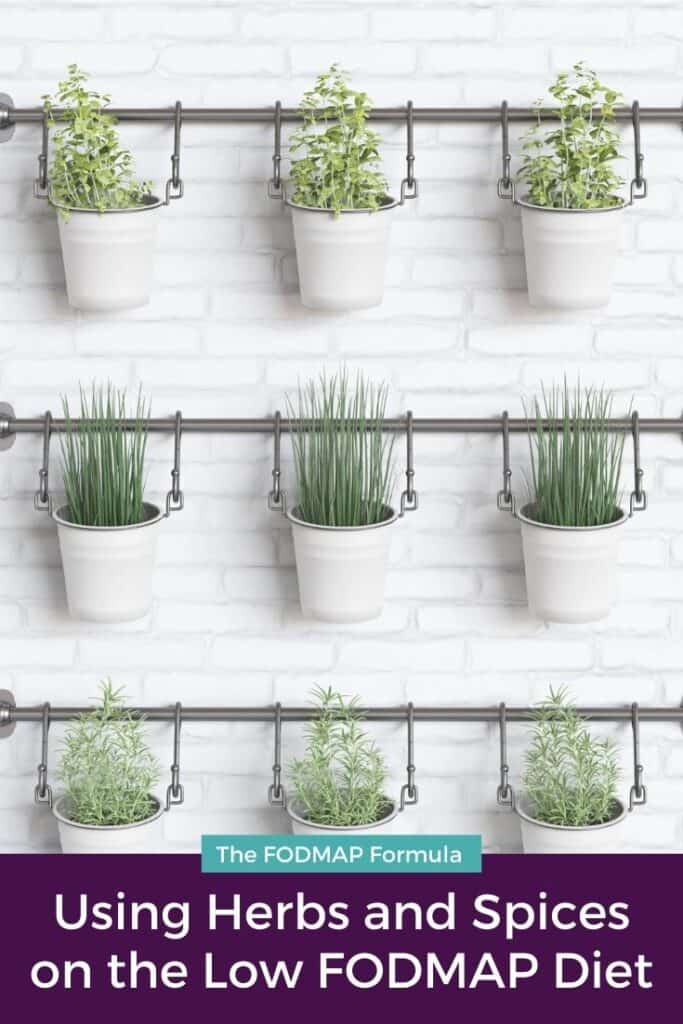Onion and garlic are a staple in the western diet. So may feel like you’re being asked to learn an entirely new way of cooking, in addition to following the low FODMAP diet. But you don’t need to panic, friend! Today we’re going to talk about how to add tons of low FODMAP flavour to your favourite dishes! Check out the article below for tips and tricks on using low FODMAP herbs and spices!
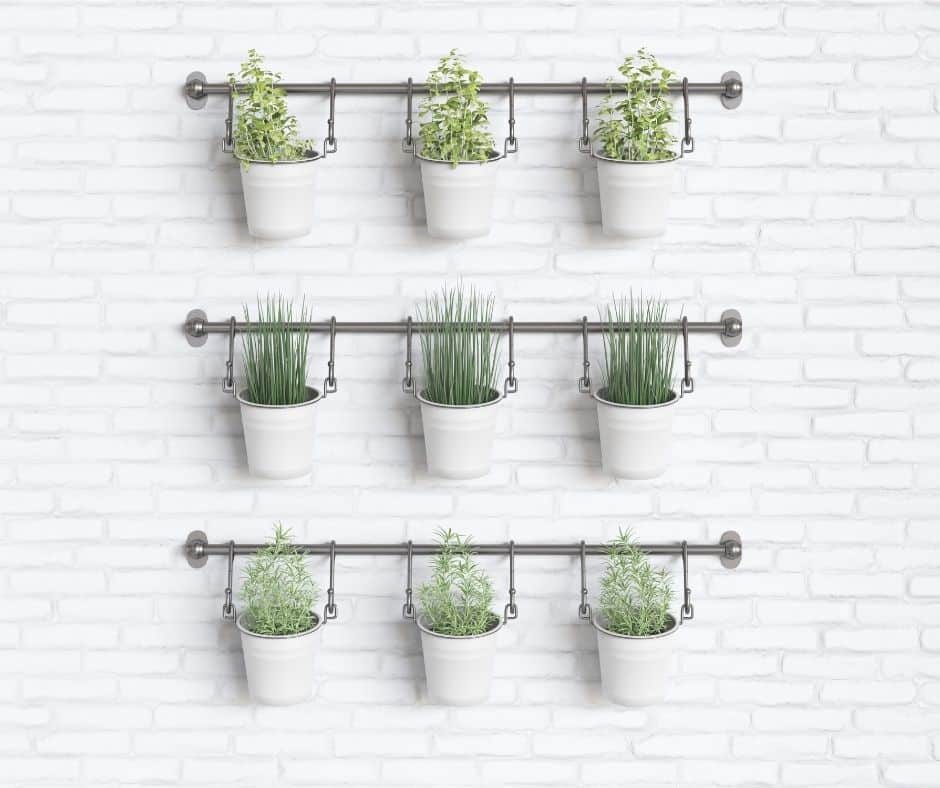
Which herbs and spices are low FODMAP?
There are tons of low FODMAP herbs and spices listed in the “condiments” section of the official Monash University app. Plus, the Monash lab is constantly adding new ingredients for us to play with. Here are some common low FODMAP seasonings you may want in your kitchen:
Fresh herbs
- chives
- green onions
- basil
- cilantro
- coriander
- dill
- mint
- parsley
- rosemary
- Sage
- Thyme
Dry herbs and spices
- allspice
- basil
- bay leaves
- chilli powder
- cinnamon
- coriander
- cumin
- curry powder
- dill
- fennel seeds
- dry mustard
- oregano
- nutmeg
- paprika
- parsley
- rosemary
- sage
- thyme
Make sure to check the official Monash app for more low FODMAP spices and herbs and their recommended serving sizes. You can also check out Monash’s blog post on how to combine low FODMAP spices and herbs to make common seasonings.
Cooking with low FODMAP herbs and spices
Cooking without traditional onion and garlic can be a challenge. But you can still enjoy tons of delicious food while following the low FODMAP diet. First of all, there are lots of ways to add high FODMAP flavours like onion and garlic to your food. Second, this is an opportunity for you to play with other delicious flavours if that’s something you’re interested in trying.
Basic Low FODMAP Spices
If you’re just starting in the kitchen, I would recommend making sure you have dry basil, chilli powder, cinnamon, cumin, dry mustard, paprika, rosemary and thyme to get yourself started. If a recipe calls for fresh ingredients, you can generally get away with substituting it with 1/3 of the dry version. For example, 1 tbsp of fresh basil becomes 1 tsp of dry basil (1 tbsp = 3 tsp).
Heads up! Not all spices keep their flavour when they’re dried. For example, dried parsley is a far cry from its fresh friend. While it will still add some flavour (and has a purpose in some recipes), you’re usually better off splurging on the fresh stuff. Other examples of splurge-worthy herbs include tarragon and chives.
That being said, some herbs are at their best when they’ve dried out. You’ll save a pretty penny and gain a ton of flavour by keeping dried herbs like oregano, oregano’s cousin marjoram, bay leaves, rosemary, and fennel seeds in your cupboard!
How to add onion and garlic flavour to your recipes
Unfortunately, onion and garlic (including onion and garlic powder) are high FODMAP. So they aren’t suitable for the first or second phase of the low FODMAP program. But that doesn’t mean you can’t add their classic umami flavour to your favourite dishes!
You have two options when it comes to replacing onion in your recipes. First, you can swap out regular onions for low FODMAP alternatives like the green part of a leek, the green part of green onions, or a sprinkle of chives.
If this is your jam, I would recommend using leeks if your recipe calls for caramelized onions or if you need to add them at the beginning of your recipe (like in a sauce, stew, or stir fry). Save delicate ingredients like green onions for the end of your recipe or as a garnish, so they’re eaten as close to raw as possible. This will help them keep their onion flavour, and they’re less likely to burn.
Second, if you need the taste of real onions or garlic for your recipe, you can safely infuse their flavour into fats like oil and butter. This magic trick is safe because FODMAPs break down in water but not fats.
If you’re making your own infused fats, cook your onion or garlic in the fat on low heat. Using a lower temperature will allow the fat to pick up the flavour without breaking down. You should also strain the oil or butter through a cheesecloth to pick up any wayward onion or garlic particles, as these are still high FODMAP.
If you prefer using a pre-made product, like garlic or oil-infused olive oil, make sure you take a look in the container for pieces of garlic or onion or sediment on the bottom of the bottle. You should also check the label for ingredients like “natural flavours,” onion or garlic extract, onion or garlic essence, spices, etc. These products aren’t genuine infused oils and are still considered high FODMAP.
How to add new flavours to your dishes
Since starting the low FODMAP diet, I see how many North Americans rely on onion and garlic in their day-to-day recipes (my pre-FODMAP self included). While it can be tough to let those flavours go, especially on short notice, you have a unique opportunity to play with new and exciting flavours!
To get the best bang for your buck, make sure you’re using fresh herbs and spices when you cook. If you can’t remember when you bought that spice packet, go ahead and replace it now (you’ll thank me later!). You should also replace your spices regularly. I do a big swap every new year to keep things simple.
Ginger – Ginger can add a bright pop of flavour when onion goes missing. You can use it fresh or dry to add a rich, deep flavour.
Cumin – Ground cumin has a salty/lime flavour. It’s an excellent swap for powdered garlic, but you may need to play with the proportions a little.
Fennel – Raw fennel has a slight licorice taste, but as it cooks, it takes on a light, sweet flavour. Cooked fennel also has the texture of onion, so it’s a good replacement for recipes that rely on onion’s texture as well as the flavour.
Horseradish – A dash of horseradish will at a little bite to your dish. This is a great substitute for recipes with fresh garlic.
Red Bell Peppers – Red peppers can help bulk up recipes that call for large amounts of onion. When sauteed, they’ll also add a slightly sweet tone to your dishes. These are fantastic in simmered recipes like pasta sauces.
Cinnamon – Cinnamon has a magical sweet and savoury flavour. This makes it perfect for desserts, sweet and savoury sauces, or in meat and poultry seasonings that need a little kick.
Final Thoughts
While cooking without onion and garlic can be challenging at first, there are lots of ways to add delicious flavours to your low FODMAP diet! With a few savvy swaps and an open mind, you may fall in love with a new way of cooking!
You might also like one of these:
- Is sugar low FODMAP? Have questions about sugar and the low FODMAP diet? Check out this article for everything you need to know about the sweet stuff and your gut!
- Is your gluten sensitivity really an intolerance to fructan? Gluten isn’t the only thing in your grains that can turn your tummy! Check out this article to understand the difference between gluten and fructan sensitivity and how to find out which one you’re actually reacting to.
- Mix and match low FODMAP meal plan Not sure what to put on your plate? This free mix and match meal plan will help you build a custom meal plan based on foods you already like to eat!
If you like this post, don’t forget to share it! Together we’ll get the low FODMAP diet down to a science!
